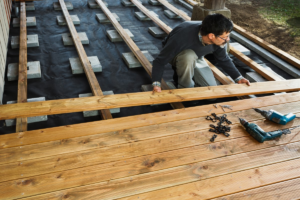Your home is more than just a structure—it’s where you relax, recharge, and make lasting memories. Over time, your needs and preferences may change, making it necessary to improve or adapt your space. Home remodeling offers a powerful way to transform your surroundings, whether you’re looking to enhance functionality, boost property value, or simply refresh the look and feel of your home. With expert Kitchen Remodeling Boston solutions, upgrading your living space becomes an investment in comfort, style, and long-term satisfaction.

The Importance of Home Remodeling
Many homeowners choose to remodel because they want a space that better reflects their current lifestyle. A growing family may need additional rooms or storage, while others may seek a more open and modern layout. Remodeling provides the flexibility to redesign your home based on how you live today—not how it was originally built.
In addition to meeting practical needs, remodeling can dramatically improve the visual appeal of your home. Updated finishes, modern fixtures, and fresh design concepts can breathe new life into outdated spaces. Whether it’s the kitchen, bathroom, or living room, thoughtful remodeling can transform tired rooms into inviting, functional areas you’ll love spending time in.
Common Remodeling Projects That Make a Big Impact
Certain areas of the home benefit more than others from remodeling, especially when done with careful planning and expertise. Here are a few high-impact areas where expert remodeling can make a noticeable difference:
1. Kitchen Renovations
The kitchen is often the heart of the home. A professional remodel can improve layout efficiency, increase storage, and add stylish elements such as custom cabinetry, countertops, and lighting. A modern, functional kitchen enhances everyday cooking and entertaining experiences.
2. Bathroom Upgrades
Remodeling a bathroom can elevate comfort and convenience. From walk-in showers and double vanities to improved lighting and ventilation, a bathroom remodel can turn a basic utility space into a spa-like retreat.
3. Living Room Transformations
Open-concept living rooms with updated flooring, lighting, and built-ins can make the space feel more expansive and welcoming. It’s an excellent area to introduce modern design trends while maintaining comfort and functionality.
4. Home Office Additions
With the rise of remote work, more homeowners are choosing to remodel part of their home into a dedicated office. Custom shelving, soundproofing, and good lighting are essential elements in creating a productive work-from-home environment.
5. Basement and Attic Conversions
Unused areas like basements or attics offer prime opportunities for remodeling. They can be transformed into guest suites, recreation rooms, or additional bedrooms—maximizing the full potential of your home’s footprint.
Benefits of Hiring Remodeling Experts
While DIY projects are tempting, professional remodeling solutions ensure quality, safety, and efficiency. Experienced contractors and designers bring a wealth of knowledge to the table—from planning and permitting to execution and finishing touches.
1. Professional Design Guidance
Design experts help translate your ideas into functional and stylish outcomes. They consider spatial flow, material compatibility, lighting needs, and more to create a cohesive vision that meets your goals.
2. Quality Craftsmanship
Trained professionals ensure that every aspect of the remodel—from framing and plumbing to tilework and painting—is done to high standards. This helps prevent costly mistakes and ensures long-lasting results.
3. Efficient Project Management
Experienced remodeling teams streamline the renovation process by managing timelines, sourcing materials, and coordinating labor. This reduces delays, keeps the project on budget, and minimizes disruption to your daily life.
4. Compliance and Safety
Permits, codes, and safety regulations are critical components of any remodeling project. Professionals are familiar with local standards and ensure the project adheres to all necessary legal and structural requirements.
Planning a Successful Remodel
A smooth remodeling experience starts with careful planning. Begin by identifying the goals for your renovation—are you seeking more space, better functionality, or a new aesthetic? Once you define your priorities, you can create a plan that aligns with your budget and timeline.
Budgeting wisely is essential. In addition to the main costs of construction and materials, set aside a contingency fund for unexpected expenses. This gives you flexibility and peace of mind if changes arise during the project.
Communicating clearly with your remodeling team is also key. Share your ideas, ask questions, and stay involved in decision-making. Collaboration ensures that the final result meets your expectations.
Boosting Property Value Through Remodeling
In addition to the lifestyle benefits, remodeling your home can increase its market value. Updated kitchens and bathrooms, energy-efficient upgrades, and added square footage are particularly attractive to potential buyers. Even if you’re not planning to sell shortly, remodeling is a wise investment that can pay off in the long term.
When done correctly, a remodel not only improves your day-to-day living experience but also enhances your home’s resale potential. A well-maintained, thoughtfully upgraded home stands out in any market.
Home remodeling is a powerful way to improve your quality of life, enhance functionality, and express your style. With expert home remodeling solutions, you can confidently upgrade your living space to better suit your current and future needs. Whether you’re making small changes or embarking on a major renovation, professional guidance and skilled craftsmanship ensure that every detail adds value and satisfaction. Your home should work for you—and remodeling is the perfect tool to make that happen.

